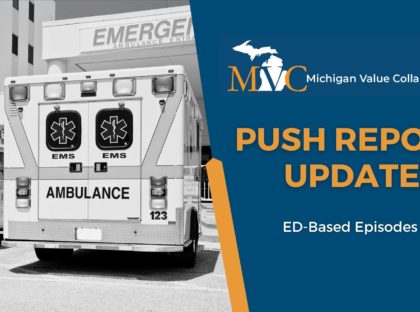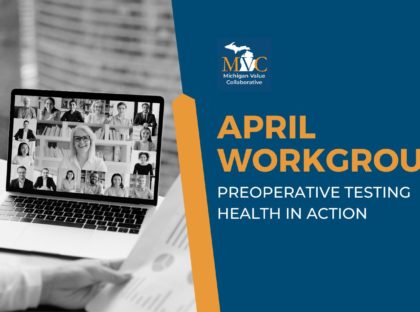This week MVC distributed its first of two preoperative testing push reports of 2023, providing members with an opportunity to benchmark their testing practices. MVC first introduced its preoperative testing push reports in 2021 to help members reduce the use of unnecessary testing for surgical procedures. Preoperative testing for low-risk surgeries, especially for young and healthy patients, often provides no clinical benefits yet is ordered regularly at hospitals across Michigan.
The report distributed this week had many similarities to versions distributed last year, namely that members continued to see their rates across a variety of tests for three elective, low-risk procedures performed in outpatient settings: laparoscopic cholecystectomy, laparoscopic inguinal hernia repair, and lumpectomy. Claims were evaluated for the index event as well as 30 days prior to the procedures for the following common tests: electrocardiogram (ECGs), echocardiogram, cardiac stress test, complete blood count, basic metabolic panel, coagulation studies, urinalysis, chest x-ray, and pulmonary function.
The latest report utilizes claims from Blue Cross Blue Shield of Michigan (BCBSM) and Blue Care Network (BCN) plans exclusively, including both the commercial and Medicare Advantage plans. This allows members to see MVC’s most up-to-date data, which includes episodes with index admissions from 7/1/2020 through 6/30/2022. Members only received reports if they had 11 or more cases in at least one of the three conditions and at least 20 cases across all three conditions.
The reports received by members this week included a patient snapshot table that defined rates for preoperative testing and no preoperative testing in patients of varying races as well as those with zero, one, or two or more comorbidities. Generally speaking, patients with no comorbidities were more likely to have no preoperative testing than patients with one or more comorbidities. There were also observed differences in testing by age; patients who had preoperative testing were older on average than patients who had no preoperative testing.
A key finding in the report is the average testing rate for all three procedures combined for the entire collaborative, which continues to showcase the wide variability across hospitals in Michigan. Some in the collaborative have an average testing rate close to 10% and some nearly 100% (Figure 1). Individual hospitals receiving a report will see on this figure where they fall compared to other hospitals in the collaborative, as well as their average rate for the three separate procedures to help deduce which procedure is driving their average rate.
Figure 1.
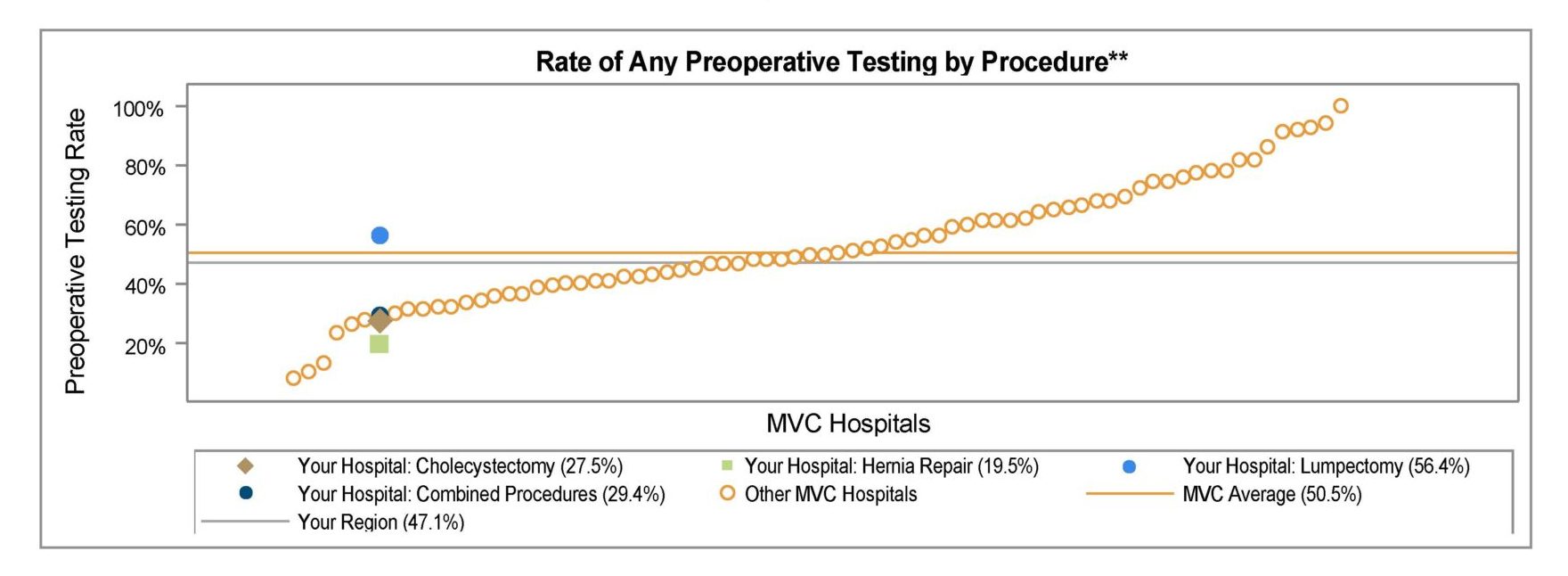
Another trend that continued in this April 2023 report is the consistency of average testing rates for combined procedures over time. A trend graph showed members how their overall rate for any preoperative testing compared in 2020, 2021, and the first half of 2022, with data points for their hospital, the MVC average, and their regional comparison group (Figure 2). There continues to be very little change in testing rates over time when looking at aggregated preoperative testing practices. The prevalence of low-value preoperative testing has remained high on average across the collaborative for three years and likely longer.
Figure 2.
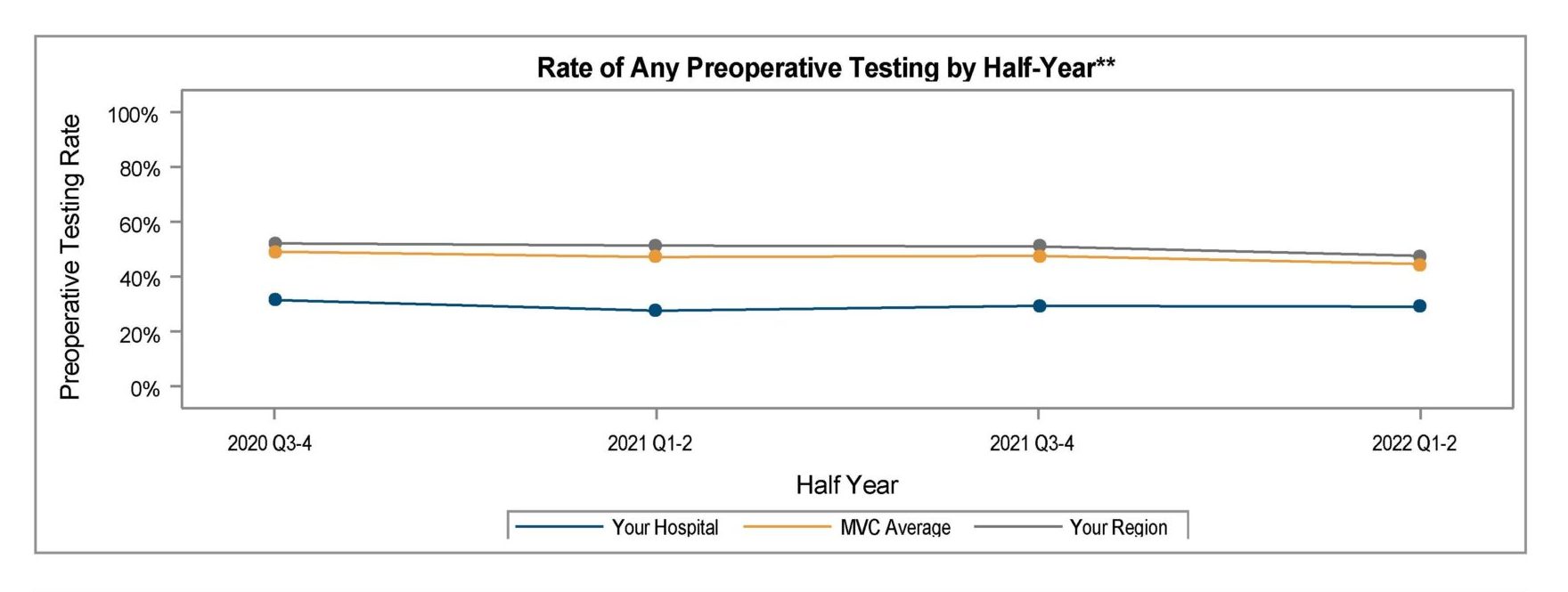
A third figure included in this report shows the absolute change in the rate of any preoperative testing for their hospital’s highest volume surgical condition among laparoscopic cholecystectomy, laparoscopic inguinal hernia repair, and lumpectomy (Figure 3). In this figure, positive values represent an increase in annual preoperative testing from 7/1/2020 to 6/30/2022, and negative values represent a decrease. The MVC average for this metric was -2.3%, so there was a small net decrease in the average rate of any testing in that time period. Once again, the variation across the collaborative was notable, with some hospitals seeing greater than 40% swings in either direction – though some sites may see drastic changes to their rates if case counts are smaller.
Figure 3.
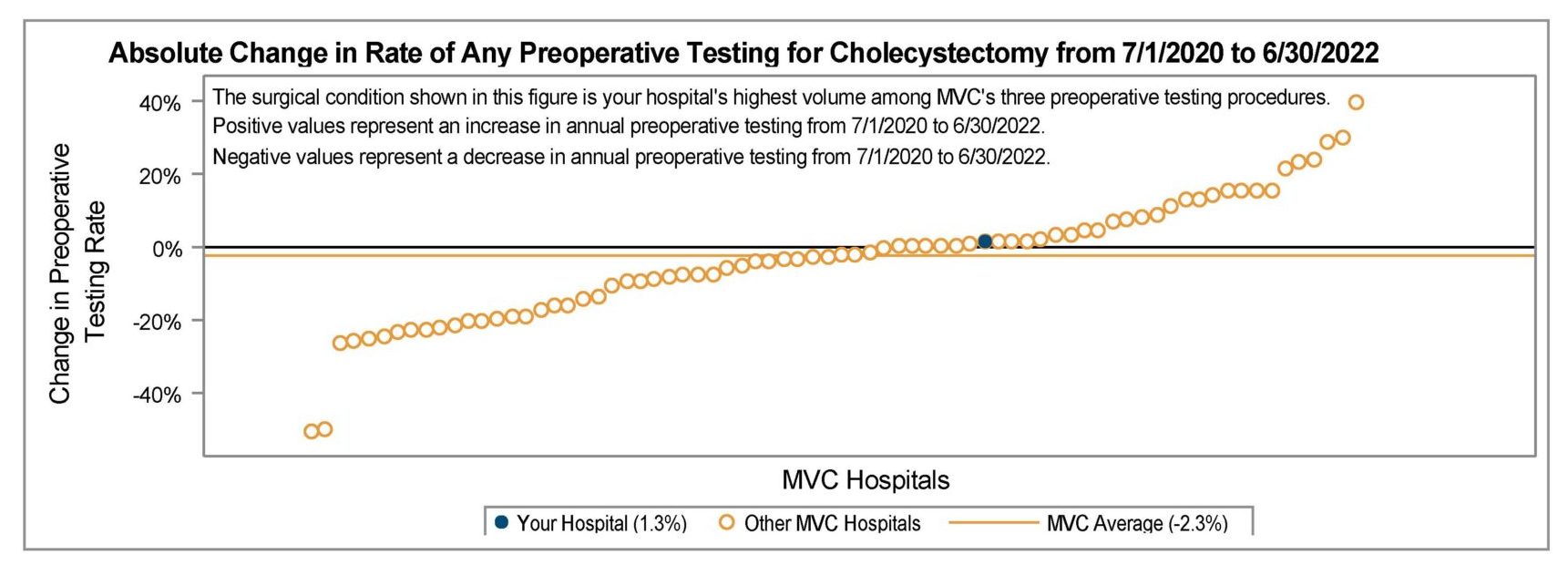
The remaining figures in the report provide preoperative testing rates for specific types of tests, with caterpillar plots for each condition to help benchmark performance to other hospitals across the state. The types of tests with the highest average testing rates across conditions are blood tests—which include complete blood count, basic metabolic panel, and coagulation tests—and electrocardiography tests. For a majority of hospitals, their testing rates are highest within the lumpectomy patient population regardless of test type, with the exception of urinalysis testing rates that are heavily driven by the cholecystectomy population.
The last time MVC shared preoperative testing reports was in July 2022, and since then MVC contributed to and launched resources to help healthcare providers implement changes. MVC members now have access to a sample preoperative testing decision aid for low-risk surgeries, developed in partnership with the Michigan Surgical Quality Collaborative (MSQC) and the Michigan Program on Value Enhancement (MPrOVE), and MVC (Figure 4). The decision aid also comes with a supplemental suggested preoperative testing chart that identifies which tests are recommended for patients who are classified by the American Society of Anesthesiologists (ASA) as Class III or above and undergoing low-risk surgery (Figure 5). Both resources are intended as guides and can be downloaded in their original file formats so hospitals may edit and adapt them within their institution. These resources were developed with input from one institution’s surgery, anesthesiology, and preoperative clinic teams, and based on clinical recommendations put forth by a number of professional societies.
Figure 4.

Figure 5.

These resources were added to a new resource website developed in partnership with MPrOVE, MSQC, and MVC. The goal of the site is to help providers safely “waive the workup” by providing the latest research, national recommendations, arguments against common myths, and frequently asked questions.
In addition, the MVC team is holding several workgroups in 2023 dedicated to preoperative testing. The first took place on March 15 and was heavily attended by MSQC and MVC members working to reduce preoperative testing as part of their P4P programs. A full recording of the workgroup is available here. MVC also has a preoperative testing workgroup scheduled for August 1, from 1-2 p.m., featuring guest presenter Nick Berlin, MD, MPH, MS, who has published several papers on patterns and determinants of low-value preoperative testing. A third preoperative testing workgroup is tentatively scheduled for October 26, from 11 a.m. to 12 p.m. Sites are encouraged to attend these events in order to learn best practices and collaborate with peers on common barriers.
For additional analysis or consultation on your hospital’s preoperative testing rates or practices, reach out to the MVC team for assistance at Michigan-Value-Collaborative@med.umich.edu.

